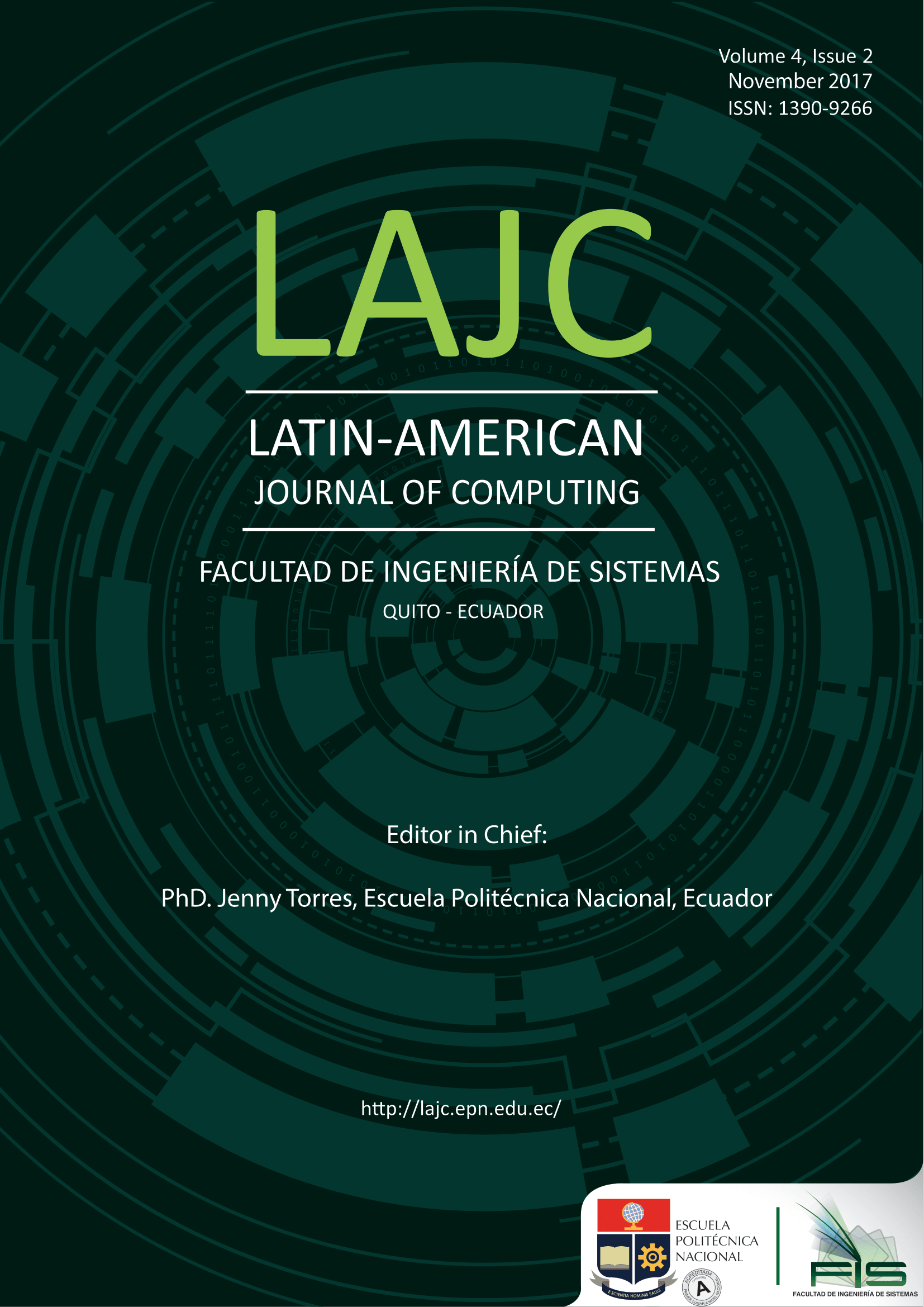Children learning of programming: Learn-Play-Do approach
Palabras clave:
Computers & programming, children learning, Scratch.Resumen
Writing computer programs is a skill that can beintroduced to children and adolescents since early ages. Althoughchildren can gain skills in coding, there is a lack of motivationand easiness at the time to write logic structures. It raises thequestion, how can children be encouraged to code in a successfulenvironment of learning and fun?. To address this question,this paper shows an experimental approach called ”Learn-Play-Do” for introducing children in the programming. It shows that(1) it is feasible for children to learn about programming byfollowing the proposed approach with (2) encouraging levels oflearning, usefulness content and self-learning programming in(3) a developing country context. The results of an empiricalexperimentation with forty-one children are reported. This workwas implemented as a social project linking the university withthe community.
Descargas
Referencias
D. H. Clements and D. F. Gullo, “Effects of computer programming on young children’s cognition,”Journal of educational psychology, vol. 76,no. 6, p. 1051, 1984.
C. Duncan, T. Bell, and S. Tanimoto, “Should Your 8-year-old Learn Coding?” in Proceedings of the 9th Workshop in Primary and Secondary Computing Education, ser. WiPSCE’14.New York, NY, USA: ACM,2014, pp. 60–69.
J. Lochhead and J. Clement,Cognitive Process Instruction. Researchon Teaching Thinking Skills. ERIC, 1979. [Online]. Available: https://eric.ed.gov/?id=ED234997
UKCRC, “UK Computing Research Committee,” 2010. [Online]. Available: http://www.ukcrc.org.uk/
K. Mayerov?, “Pilot activities: LEGO WeDo at primary school,” in Proceedings of 3rd International Workshop Teaching Robotics, Teachingwith Robotics: Integrating Robotics in School Curriculum, 2012, pp. 32–39.
M. C. Carlisle, T. A. Wilson, J. W. Humphries, and S. M. Hadfield,“RAPTOR: A Visual Programming Environment for Teaching Algorithmic Problem Solving,” in Proceedings of the 36th SIGCSE Technical Symposium on Computer Science Education, ser. SIGCSE ’05.NewYork, NY, USA: ACM, 2005, pp. 176–180.
M. Resnick, J. Maloney, A. Monroy-Hernández, N. Rusk, E. Eastmond,K. Brennan, A. Millner, E. Rosenbaum, J. Silver, B. Silverman, andothers, “Scratch: programming for all, ”Communications of the ACM, vol. 52, no. 11, pp. 60–67, 2009.
H. Lieberman, “Tinker: A programming by demonstration system for beginning programmers,”Watch what I do: programming by demonstration, vol. 1, pp. 49–64, 1993.
D. H. Clements and J. S. Meredith, “Turtle math,”Montreal: Logo Computer Systems (LCSI), 1994.
R. Osborne and P. Freyberg, The Implications of Children’s Science. Heinemann Educational Books, Inc, Jan. 1985.
G. Julian and I. Monserrate, “Proyecto EPN-FIS de Vinculación Social, Programación para niños Red Juega y Aprende.” 2015.
G. Kress, “Visual and verbal modes of representation in electronicallymediated,”Page to screen: Taking literacy into the electronic era, p. 53,1998.
M. Resnick, “Learn to Code, Code to Learn,” 2013. [Online]. Available: https://scratch.mit.edu/
——, “Scratch day,”EdSurge, May, 2013.
C. Kelleher, J. Hodgins, and S. Kiesler, “Motivating Programming: using storytelling to make computer programming attractive to more middleschool girls,” 2006.
Red juega y aprende, “Interactive game, Super Buho Bros at the Scratch MIT network, ”2015. [Online]. Available: https://scratch.mit.edu/projects/45950952/#editor
Q. Burkeand Y. B. Kafai, “Programming & storytelling: opportunities for learning about coding & composition, ”in Proceedings of the 9th international conference on interaction design and children. ACM, 2010, pp. 348–351. [Online]. Available: http://dl.acm.org/citation.cfm?id=1810611
J. Piaget, “Part I: Cognitive development in children: Piaget development and learning,”Journal of research in science teaching, vol. 2, no. 3, pp.176–186, 1964.
A. Kozulin,Vygotsky’s educational theory in cultural context. Cambridge University Press, 2003.
N. Chomsky, “A review of BF Skinner’s Verbal Behavior,”Language, vol. 35, no. 1, pp. 26–58, 1959.
S. Suzuki and W. Suzuki, Nurtured by love: The classic approach totalent education. Alfred Music, 1983.[22] E. Hermann,Shinichi Suzuki: The Man and His Philosophy (Revised).Alfred Music, 1999.
S. Suzuki and M. L. Nagata,Ability development from age zero. Alfred Music, 2014.
D. G. Hazlewood, S. Stouffer, and M. Warshauer, “Suzuki meets P?lya: teaching mathematics to young pupils, ”The Arithmetic Teacher, vol. 37,no. 3, p. 8, 1989.
N. Mandran, “M ́ethode de conduite de la recherche en informatiquecentr ́ee humain : processus et inclusion d’une d ́emarche centr ́ee utilisateur,” Ph.D. dissertation, Nov. 2015, working paper or preprint.
Red juega y aprende, “Scratch - Imagine, Program, Share,” 2015.[Online]. Available: https://scratch.mit.edu/studios/932042/
Descargas
Publicado
Número
Sección
Licencia
Aviso de derechos de autor/a
Los autores/as que publiquen en esta revista aceptan las siguientes condiciones:
- Los autores conservan los derechos de autor y ceden a la revista el derecho de la primera publicación, con el trabajo registrado con la Creative Commons Attribution-Non-Commercial-Share-Alike 4.0 International, que permite a terceros utilizar lo publicado siempre que mencionen la autoría del trabajo y a la primera publicación en esta revista.
- Los autores pueden realizar otros acuerdos contractuales independientes y adicionales para la distribución no exclusiva de la versión del artículo publicado en esta revista (p. ej., incluirlo en un repositorio institucional o publicarlo en un libro) siempre que indiquen claramente que el trabajo se publicó por primera vez en esta revista.
- Se permite y recomienda a los autores a compartir su trabajo en línea (por ejemplo: en repositorios institucionales o páginas web personales) antes y durante el proceso de envío del manuscrito, ya que puede conducir a intercambios productivos, a una mayor y más rápida citación del trabajo publicado.
Descargo de Responsabilidad
LAJC en ningún caso será responsable de cualquier reclamo directo, indirecto, incidental, punitivo o consecuente de infracción de derechos de autor relacionado con artículos que han sido presentados para evaluación o publicados en cualquier número de esta revista. Más Información en nuestro Aviso de Descargo de Responsabilidad.










